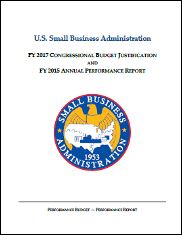- Home
- Agencies
- Department of Agriculture
- Department of Housing and Urban Development
- General Services Administration
- Department of Commerce
- Department of the Interior
- National Aeronautics and Space Administration
- Department of Defense
- Department of Justice
- National Science Foundation
- Department of Education
- Department of Labor
- Office of Personnel Management
- Department of Energy
- Department of State
- Small Business Administration
- Environmental Protection Agency
- Department of Transportation
- Social Security Administration
- Department of Health and Human Services
- Department of the Treasury
- U.S. Agency for International Development
- Department of Homeland Security
- Department of Veterans Affairs
- Goals
- Initiatives
- Programs
Primary tabs
Key to Changes
This text is Revised text
This word has been added to the text
This text is Last Published text
This word has been removed from the text
Modifed styling with no visual changes
Strategic Objective
Foster a small business-friendly environment by reducing unfair regulatory burdens
Strategic Objective
Overview
The SBA plays a critical role in the Administration’s ongoing efforts to reduce regulatory barriers to entrepreneurship, innovation, and American competitiveness. As part of the Start-Up America initiative, government leaders met with more than 1,000 entrepreneurs across the country to talk about ways to reduce barriers for small business growth. These conversations continue to guide SBA policy and programmatic decisions. In addition, SBA’s National Ombudsman plays a key role in helping small business owners deal with specific regulatory burdens and challenges that result from federal agency processes. Furthermore, the SBA is focused on and committed to not only compiling internal SBA data to inform programmatic decisions, but also partnering with the key federal agencies to gather the most robust data sets to make informed policy.
Read Less...Progress Update
The SBA continued its progress in reducing undue regulatory burdens on the small business community. The Agency exceeded its performance targets to broaden outreach to and assist small businesses. Attention focused on three additional priority areas: (1) identification and resolution of systemic regulatory barriers to small business success and growth; (2) growing the diversity and engagement of the Regional Regulatory Fairness Boards through strategic appointments; and (3) strengthening partnerships with stakeholders. The SBA experienced a decrease in membership on the Regulatory Fairness Boards but exceeded its goal for small business outreach through events including meetings, roundtables, and hearings with small business owners in all ten SBA regions. Building on these accomplishments, the Agency will make critical improvements to its case management infrastructure to boost user experience, program capacity, and impact.









